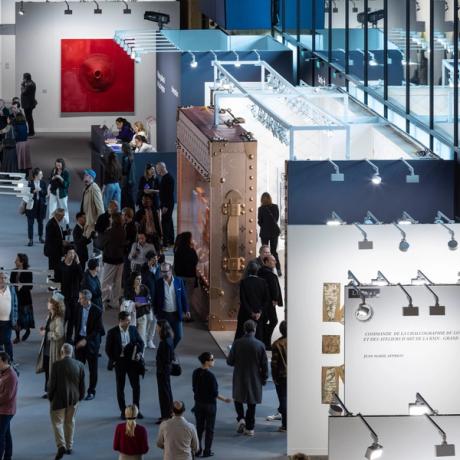
A thinning top-end of the market, sales of women artists falling back to 2020 levels and the resurgence of mainland Chinese spending (for now) are some of the findings from the latest Survey of Global Collecting. The report, published annually by UBS and Art Basel, collates responses from 2,828 high net worth (HNW) and ultra-high net worth (UHNW) collectors across 11 regions in the first half of 2023. We dissect the findings with the report’s author, Clare McAndrew.
Big spending still down
Cautious buying and price corrections at the top-end of the market—conveyed anecdotally by dealers over the past year and gleaned from recent uneven auction results—are confirmed in the report’s figures. Following a post-pandemic bounce back, sales of works priced $1m and above account for 9% of total purchases—less than the 12% registered in 2021, although up from 4% in 2022. The average allocation to art in the wealth portfolios of HNW collectors fell to 19% in 2023, from a peak of 24% in 2022.
Even more telling is that only 26% of those surveyed planned to sell works from their collection over the next 12 months—significantly down from 39% last year, suggesting a lack of confidence among buyers. Similarly, 38% of HNW collectors resold works from their collection during 2022 and 2023, which is much lower than in previous years: 60% of collectors resold works in 2020 and 49% did in 2021.
“The last few years have seen the high-end of the market keep things afloat—last year the $10m category at auction was the only one that grew, while everything else fell,” McAndrew says. “So these latest results are an indicator of the top-end getting thinner.”
Small step backwards for women
One of the report’s more eyebrow-raising data points shows that the share of works by women artists in collections has fallen back to 2020 levels, at 39%. Still, the percentage of works by women in the collections of the very richest collectors has actually grown from last year, to 55%, “suggesting that some of the spending at the very highest levels was on female artists”. In other words, a general polarisation observed within the wider market is affecting women too, with major collectors vying for a coterie of trophy names, such as Louise Bourgeois and Yayoi Kusama, and spending less on the rest.
McAndrew agrees that a stratification is at play, but is reluctant to diagnose this problem solely through sales: “The market is blamed a lot for the divergence for male and female artists, but it’s not as simple as that. Female artists now often command higher prices than their male counterparts, but there are far fewer of them entering the market to begin with. And to tackle the lack of availability we have to think deeper— to institutions, to our society.”
China is back, but probably not for long
A “Chinese post-pandemic spending euphoria” helped to shore up the market this year, the report finds, with collectors from mainland China registering the highest median expenditure in the first half of 2023, at $241,000, following a 6% decline in 2022, to $202,000. Spending from mainland China was especially strong for painting, up 20% from 2022, and was four times the average.
Of course, extensively researched reports like this one take months to compile, and its results seem out of step with China’s current economic turmoil. A cratering property market has caused a number of Chinese museums to close and a recent sale of works from the Long Museum’s collection was met with a lukewarm reception. “A few months can make a world of difference, I don’t think we could have predicted what’s happening now in China,” McAndrew says. “I’m interested to see the responses in the next survey.”
Fewer events, but further afield
The last three pandemic-marked years have seen widespread shifts in the attendance of live events such as fairs, biennials, auctions and exhibition openings. While a spike in attendance was observed in 2021, this figure has dropped the past two years, and surveyed collectors now attend an average of 32 events per year—nine fewer than in 2019. But this does not mean collectors are staying closer to home. In fact the share of local events attended by those surveyed has dropped by around 5% since 2019, suggesting that wealthy collectors might be saving more time, but not jet fuel.
How the rich get richer
This year’s report sees its deepest dive into the interactions of credit and art collecting. It finds that 43% of HNW collectors have used credit or loaned funds to purchase works of art or objects for their collections at some stage, including 30% in 2022 or 2023.
Wealthier and more established collectors tended to have the highest share of their collections bought using credit. One-third of UHNW collectors had financed over 50% of their collections with loaned funds versus only 2% of those with wealth of less than $5m.
McAndrew points out a dissonance between how few collectors term themselves as “investors” (11%) and how many leverage their collections and use art as collateral. “A fairly small minority think of themselves as financially motivated collectors, but the financial implications of their collections were evident. As you go up the wealth ladder, the richer get more creative with their money, it’s how they stay wealthy, and art is certainly an instrument they use to achieve that,” McAndrew says.
- The full The Art Basel and UBS Survey of Global Collecting in 2023 is available to download here










